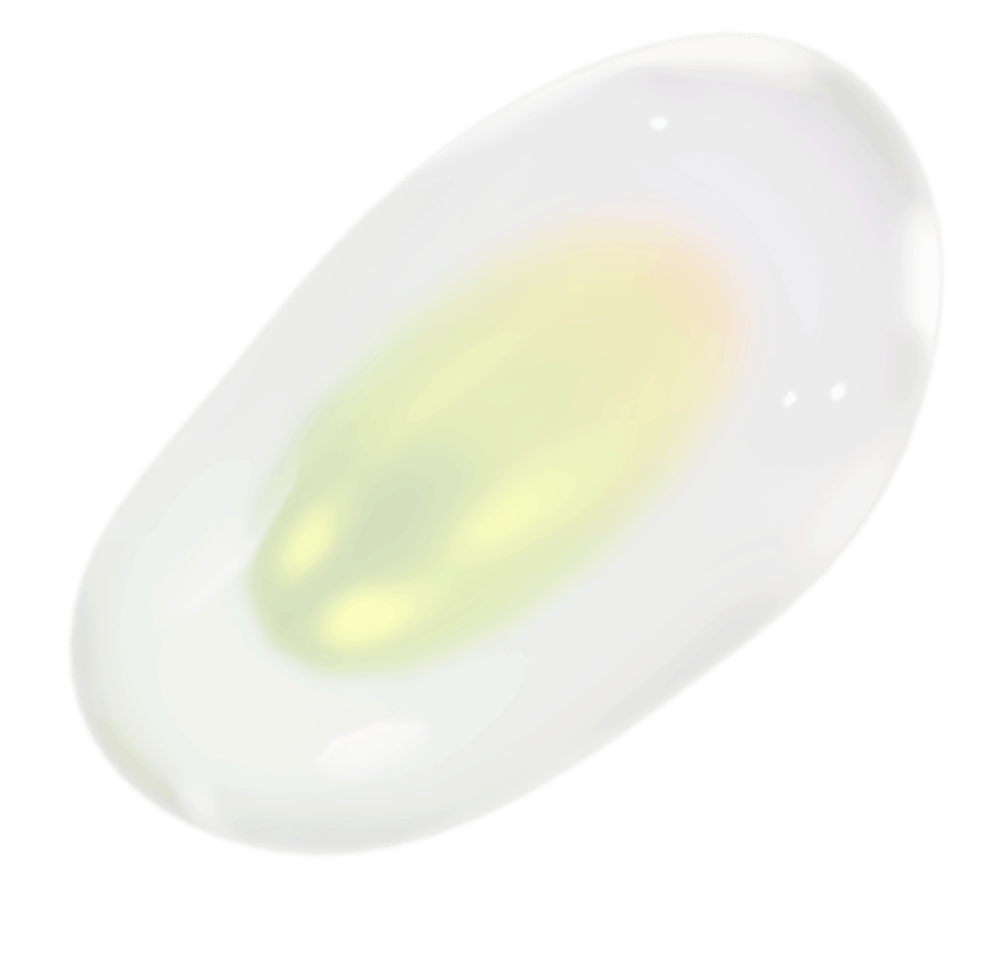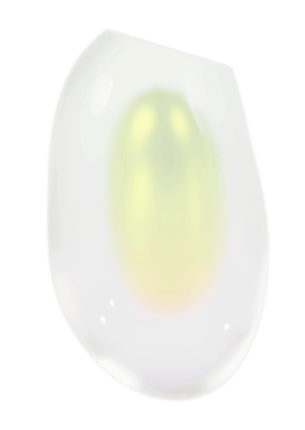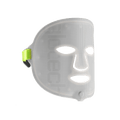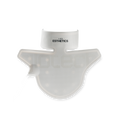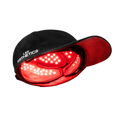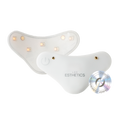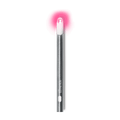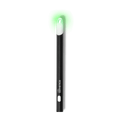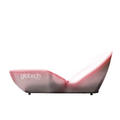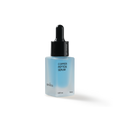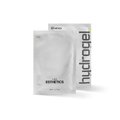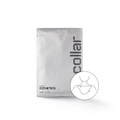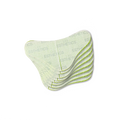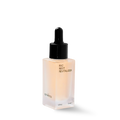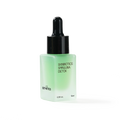Clinical
Studies
Category
 Skin Rejuvenation
Skin Rejuvenation
 Melasma
Melasma
 Pigmentation
Pigmentation
 Wrinkles
Wrinkles
 Acne Vulgaris
Acne Vulgaris
 Herpes labialis
Herpes labialis
 Hair Growth
Hair Growth
 Androgenetic alopecia
Androgenetic alopecia
 Safety
Safety
Male facial rejuvenation using a combination 633, 830, and 1072 nm LED face mask
"The participants reported overall favorable results and improvements in all individual categories, were satisfied with the treatment, and would recommend the product to others. The participants perceived the greatest improvement in fine lines and wrinkles, skin texture, and youthful appearance. Photographic digital analysis demonstrated favorable improvements in wrinkles, UV spots, brown spots, pores, and porphyrins."
Read moreSafety and efficacy of a novel home-use device for light-potentiated (LED) skin treatment
"After in vitro and ex vivo investigations, a clinical study assessed the safety and efficacy of a daily treatment with the home-use device for 28 days. A significant increases in skin density and radiance while reducing the wrinkles was obtained with no side effects."
Read moreEfficacy of Home-Use Light-Emitting Diode Device at 637 and 854-nm for Facial Rejuvenation: A Split-Face Pilot Study
"All 24 subjects completed the study and attended all follow-up. Skin elasticity was significantly higher in the LED group compared to the control during the 6- and 8-week follow-up (p < 0.05). In the LED group, an image of the treated skin captured using Visioscan® showed improvement of the skin texture at 8-week follow-up.
Majority of the subjects in the LED group scored good improvement on all follow-ups (37.5%, 41.7%, 58.3% and 62.5%) when compared to the baseline. No adverse reactions or pain were recorded in the study."
Comment: Only 2 of the 10 statistical intergroup tests showed significant difference. without correction for multiple testing (eg. Bonferroni).
Read moreThe use of lasers and light sources in skin rejuvenation.
"Currently, there is a wide range of lasers and devices available for the regeneration and healing of skin. Lasers and light sources for skin rejuvenation involve the removal of aged skin tissue via thermal heat from high-powered lasers, stimulating the surrounding tissues to recover through natural wound-healing processes. In contrast, photobiomodulation, which makes use of low energy lasers or light emitting diodes, uses no heat and has shown positive effects in the reduction of wrinkles and improving skin laxity."
Read moreEffects of low-level laser therapy on the wrinkles and moisture content of the forehead, eyes, and cheek.
"The application of LLLT, EA, and RF had positive effects on wrinkle and moisture content of adult women's faces."
Read moreA controlled trial to determine the efficacy of red and near-infrared light treatment in reduction of fine lines, wrinkles, skin roughness, and intradermal collagen density increase.
"The treated subjects experienced significantly improved skin complexion and skin feeling, profilometrically assessed skin roughness, and ultrasonographically measured collagen density. The blinded clinical evaluation of photographs confirmed significant improvement in the intervention groups compared with the control."
Read moreRegulation of skin collagen metabolism in vitro using a pulsed 660 nm LED light source: clinical correlation with a single-blinded study.
"Results yielded a mean percent difference between LED-treated and non-LED-treated HRS of 31% in levels of type-1 procollagen and of -18% in MMP-1. No histological changes were observed.
Furthermore, profilometry quantification revealed that more than 90% of individuals showed a reduction in rhytid depth and surface roughness, and, via a blinded clinical assessment, that 87% experienced a reduction in the Fitzpatrick wrinkling severity score after 12 LED treatments."
Star: Interesting and quite extensive paper.
Read moreA prospective, randomized, placebo-controlled, double-blinded, and split-face clinical study on LED phototherapy for skin rejuvenation: clinical, profilometric, histologic, ultrastructural, and biochemical evaluations and comparison of three different treatment settings.
"Our study results showed that LED phototherapy is an effective treatment for skin rejuvenation through objectively measured data and histological and ultrastructural bodies of evidence of increased collagen and elastic fibers as well as clinical photographs and double-blinded assessment of the investigators and the subjects."
Read morePhotobiomodulation for melasma treatment: Integrative review and state of the art
"We identified nine relevant studies. Clinical studies that suggest that PBM effectively reduces melasma-associated hyperpigmentation. Specific wavelengths (red: 630 nm; amber: 585 nm; infrared: 830 and 850 nm) at radiant exposures between 1 and 20 J/cm2 exert modulatory effects on tyrosinase activity, gene expression, and protein synthesis of melanocytic pathway components, and thus significantly reduce the melanin content. Additionally, PBM is effective in improving the dermal structure and reducing erythema and neovascularization, features recently identified as pathological components of melasma."
"PBM emerges as a promising, contemporary, and non-invasive procedure for treating melasma. Beyond its role in inhibiting melanogenesis, PBM shows potential in reducing erythema and vascularization and improving dermal conditions."
The 675-nm wavelength for treating facial melasma
"Our research shows that individuals with Fitzpatrick phototypes II to III can treat facial melasma with the 675-nm laser source system without risk. Due to its interaction with melanin, collagen and haemoglobin chromophores, as well as its excellent capacity to penetrate tissues with less heating, this system is promising in the treatment of pigmentary and vascular illnesses such as melasma. The great success of the technology we used came from the reduced levels of inflammation produced after the treatments and the low energy level implied."
Read moreThe Management of Melasma on Skin Types V and VI Using Light Emitting Diode Treatment
"Both subjective and objective results indicated a significant improvement of melasma. Statistical analyses revealed significant improvements in both groups."
Read moreLED photoprevention: reduced MED response following multiple LED exposures.
"Reduction of erythema was considered significant when erythema was reduced by >50% on the LED-treated side as opposed to CONTROL side. A significant LED treatment reduction in UV-B induced erythema reaction was observed in at least one occasion in 85% of subjects, including patients suffering from PLE. Moreover, there was evidence of a dose-related pattern in results. Finally, a sun protection factor SPF-15-like effect and a reduction in post-inflammatory hyperpigmentation were observed on the LED pre-treated side."
Read morePhotobiomodulation for Skin Pigmentation Disorders: A Dual-Function Treatment
"The intriguing topic that will be addressed as follows is that photobiomodulation therapy (PBMT) may be able to treat various types of pigmentation disorders and exert seemingly opposite effects depending on the result required."
PBMT using fairly similar parameters may, therefore, be able to produce opposite effects in the skin, either lightening it or darkening it depending on what is required for optimum cosmetic outcomes.
Read moreLow-level laser (light) therapy (LLLT) in skin: stimulating, healing, restoring.
"In dermatology, LLLT has beneficial effects on wrinkles, acne scars, hypertrophic scars, and healing of burns. LLLT can reduce UV damage both as a treatment and as a prophylactic measure. In pigmentary disorders such as vitiligo, LLLT can increase pigmentation by stimulating melanocyte proliferation and reduce depigmentation by inhibiting autoimmunity. Inflammatory diseases such as psoriasis and acne can also be managed. The noninvasive nature and almost complete absence of side effects encourage further testing in dermatology."
Read moreThe Use of a Light-Emitting Diode Device for Neck Rejuvenation and Its Safety on Thyroid Glands
"Evaluation using the Lemperle wrinkle scale and global improvement scales by both investigators and subjects showed significant improvement after 16 weeks of daily application, as well as 8 weeks after discontinuation. Biophysical parameters, such as hydration, elasticity, and density, also showed significant improvements.
Hence, the long-term use of the LED device was safe and effective for neck rejuvenation, and showed no significant side effects on the adjacent thyroid and parathyroid glands."
Read moreComparison of red light and blue light therapies for mild-to-moderate acne vulgaris: A randomized controlled clinical study
"At the 2-week follow-up, the average improvement rate of total acne lesions was 36.2% in the RL group and 30.7% in the BL group (p > .05)."
"Red light and BL therapies have similar efficacy in mild-to-moderate acne vulgaris, especially for inflammatory lesions. RL had advantages with fewer adverse reactions compared with BL."
Read moreThe Anti-Acne Effect of Near-Infrared Low-Level Laser Therapy
"Significant improvements in acne lesions (assessed as non-inflammatory and inflammatory lesion counts) and a significant decrease in skin sebum excretion were observed after the treatment. No adverse effects were reported."
Read moreThe efficacy of blue light versus the combination of blue and red light therapy in the treatment of acne vulgaris
"As it is confirmed by our findings, the combination of blue and red light is more effective in treatment of acne vulgaris rather than blue light alone, with no significant adverse effects."
Comment: At week 16, the improvement was 70% in combination group and 51% in blue light group. There were 33 participants in this study.
Read moreA Comparative Study Between Once-Weekly and Alternating Twice-Weekly Regimen Using Blue (470 nm) and Red (640 nm) Light Combination LED Phototherapy for Moderate-to-Severe Acne Vulgaris
"There was no statistically significant difference between once- and alternating twice-weekly regimens. Both regimens provided marked improvement only for inflammatory lesions. The median percentage of acne reduction was significantly demonstrated for 1 week after finishing the course of treatment and was sustained until the end of the study. There were no side effects noted throughout the study period."
Read moreClinical comparison of salicylic acid peel and LED-Laser phototherapy for the treatment of Acne vulgaris in teenagers.
"The combined use of red and blue lights due to their anti-inflammatory and wound-healing properties is a more efficient alternative for treating Acne vulgaris in relation to SA and proves more reliable and without side effects, improving the adolescents' skin health."
Read moreRandomized trial of three phototherapy methods for the treatment of acne vulgaris in Chinese patients.
At 1 month, >90% clearance or moderate improvement occurred in 22/50 (44%) patients in the LED group. There was no control group.
Read moreThe clinical and histological effect of home-use, combination blue-red LED phototherapy for mild-to-moderate acne vulgaris in Korean patients: a double-blind, randomized controlled trial.
"At the final visit at 12 weeks, both inflammatory and noninflammatory acne lesions had decreased significantly, by 77% and 54%, respectively, in the treatment group. No significant difference was observed in the control group.
In the treatment group, sebum output reduction, attenuated inflammatory cell infiltrations and a decreased size of the sebaceous gland were found.
The immunostaining intensities for interleukin (IL)-8, IL-1α, matrix metalloproteinase-9, toll-like receptor-2, nuclear factor-κB, insulin-like growth factor-1 receptor and sterol response element binding protein (SREBP)-1 were reduced concomitantly. Messenger RNA expression of SREBP-1c was also decreased.
No severe adverse reactions were reported."
Read moreEvaluation of the efficacy of low-level light therapy using 1072 nm infrared light for the treatment of herpes simplex labialis.
"The median time to healing for the active group was 129 h, compared with 177 h for the control group, which was significant (P = 0.01)."
Read moreThe effect of 670-nm low laser therapy on herpes simplex type 1.
"LLLT of herpes simples virus 1 (HSV-1) appears to be an effective treatment modality without any observed side effects."
Read morePrevention of recurrent herpes labialis outbreaks through low-intensity laser therapy: a clinical protocol with 3-year follow-up.
"Based on the outcomes observed in this study, it is possible to conclude that the preventive protocol proposed may represent an alternative treatment for patients presenting recurrent herpes labialis infection."
Read moreRecurrent herpes simplex infections: laser therapy as a potential tool for long-term successful treatment.
"Two clinical cases are described with recurrent labial herpes for which LLLT was used. Following treatment, both patients remained symptom free during the 17-month clinical follow-up period."
Read moreLow- and high-intensity lasers in the treatment of herpes simplex virus 1 infection.
"We report a clinical case of a patient with severe oral HSV-1 infection in the lower lip."
"Pain sensitivity was completely gone after the first irradiation with the low-intensity laser."
Read moreLow- and high-intensity lasers in the treatment of herpes simplex virus 1 infection.
"We report a clinical case of a patient with severe oral HSV-1 infection in the lower lip."
"Pain sensitivity was completely gone after the first irradiation with the low-intensity laser."
Read moreA pilot study of treatment of herpes labialis with 1072 nm narrow waveband light
"The results demonstrated that a single 5 min light treatment significantly reduced cold sore healing time by 4 days;
1072 nm light healed cold sores in 4.3 ± 1.8 days (mean ± SD) as compared with aciclovir applied five times daily, 8.5 ± 3.0 days (P < 0.0001)."
Read moreShining a (blue) light on hair follicle chronobiology and photobiomodulation
"In their study, Buscone et al.44 (2021) now report that the exposure of human scalp HFs to blue light (453 nm) leads to an intrafollicular accumulation of CRY1 protein. This CRY1 stimulation prolongs anagen, while CRY1 silencing promotes catagen development ex vivo. The authors also find CRY1 protein to be prominently expressed in human scalp HFs during anagen, notably including in epithelial stem/progenitor cells.44 This is in line with the concept that the previously reported hair growth stimulation by blue light48 is mediated, at least in part, by CRY1—inviting the direct targeting of CRY1 expression/activity in the future management of both, hair loss (alopecia, effluvium) and unwanted hair growth (hirsutism, hypertrichosis)."
"Thus, the Buscone et al.44 (2021) study challenges investigative dermatology to broaden its horizon from a long‐standing focus on ultraviolet light and its many facets in skin physiology, carcinogenesis, ageing and phototherapy11, 57-65 to the photobiomodulation of skin and its appendages in health and disease by visible light,52 well beyond photodynamic therapy65 and hair growth applications of blue light treatment.44, 48"
Read moreCryptochrome 1 is modulated by blue light in human keratinocytes and exerts positive impact on human hair growth
"Here, we show that 453 nm blue light induces cryptochrome 1 (CRY1) accumulation in human keratinocytes and the hair follicle. CRY1 is prominently expressed in the human anagen hair follicle, including epithelial stem cells. Specific silencing of CRY1 promotes catagen, while stimulation of CRY1 by KL001 prolongs anagen ex vivo by altering the expression of genes involved in apoptosis and proliferation."
"Together, our study identifies a role for CRY1 in sustaining human hair growth. Previously we demonstrated positive effects of 453 nm blue light on hair growth ex vivo. Taken all together, our study suggests that CRY1 might mediate blue light dependent positive effects on hair growth."
Read moreTrichogenic Photostimulation Using Monolithic Flexible Vertical AlGaInP Light-Emitting Diodes.
"The photostimulated mice exhibited a wider hair-regrowth area (59.76% in 1×1 cm2) than those of other groups (36.16% in negative control group and 42.78% in positive control group)."
"The 183.2 µm length of the photostimulated mouse hair was remarkably longer than 103.6 µm of the positive control group. Red light with a wavelength of ~650 nm is known to accelerate the proliferation and anagen entry of hair follicle cells, which are closely related with hair regrowth."
"Mouse hair follicles proliferated more in the light-treated skin compared with the control groups, as presented in Figure 5d-i and Figure 5e-i."
"As shown in Figure 5f-ii, the β-catenin protein was prominently expressed in the experimental group compared to the control groups"
"These results demonstrate that the red light of f-VLED successfully accelerated the Wnt/β-catenin signal, enabling the proliferation of hair follicle cells and enhancing anagen entry of mouse dorsal hair."
"In summary, we demonstrated a skin-attachable trichogenic photostimulator using high-performance AlGaInP f-VLEDs."
Read moreActivation of Wnt/β-catenin signaling is involved in hair growth-promoting effect of 655-nm red light and LED in in vitro culture model.
"The 655-nm red light + LED not only enhanced hair shaft elongation, but also reduced catagen transition in human hair follicle organ culture, with the greatest effectiveness observed at 5 min (0.839 J/cm2). Additionally, 655-nm red light + LED enhanced the expression of β-catenin, p-GSK3β, and Lef1, signaling molecules of the Wnt/β-catenin pathway, in the hair matrix.
Activation of Wnt/β-catenin signaling is involved in hair growth-promoting effect of 655-nm red light and LED in vitro and therefore may serve as an alternative therapeutic option for alopecia."
Read moreVarious Wavelengths of Light-Emitting Diode Light Regulate the Proliferation of Human Dermal Papilla Cells and Hair Follicles via Wnt/β-Catenin and the Extracellular Signal-Regulated Kinase Pathways.
"The most potent wavelength in promoting the hDPC proliferation is 660 nm and 830 nm promoted hDPC proliferation to a lesser extent than 660 nm. Various wavelengths significantly increased β-catenin, Axin2, Wnt3a, Wnt5a and Wnt10b mRNA expression. LED irradiation significantly increased β-catenin and cyclin D expression, and the phosphorylation of MAPK and extracellular signal-regulated kinase (ERK)."
"HFs irradiated with 415 nm and 660 nm grew longer than control."
"Our result suggests that LED has a potential to stimulate hDPC proliferation via the activation of Wnt/β-catenin signaling and ERK pathway. To our best knowledge, this is the first report which investigated that the effect of various wavelengths of LED on hDPC proliferation and the underlying mechanisms."
Read moreA new path in defining light parameters for hair growth: Discovery and modulation of photoreceptors in human hair follicle.
"Treatment with 3.2 J/cm2 of blue light with 453 nm central wavelength significantly prolonged anagen phase in hair follicles ex vivo that was correlated with sustained proliferation in the light-treated samples. In contrast, hair follicle treatment with 3.2 J/cm2 of 689 nm light (red light) did not significantly affect hair growth ex vivo."
"We provide the first evidence that (i) OPN2 and OPN3 are expressed in human hair follicle, and (ii) A 453 nm blue light at low radiant exposure exerts a positive effect on hair growth ex vivo, potentially via interaction with OPN3."
Narrow-band red LED light promotes mouse hair growth through paracrine growth factors from dermal papilla.
"Our data here suggest that red LED stimulates hair growth in mice and induces several potential mediators to stimulate hair growth from human dermal papilla cells. Therefore, red LED is a hopeful therapeutic modality for hair loss diseases. In addition, although LED light and low level laser share some characteristics, LED light source is more cost efficient and portable, can irradiate more surface area and produces less heat than LLLT. Therefore, LED therapy can be a convenient and safe strategy for hair growth from aspect of clinical practice."
Read moreAssessment of Effects of Low-Level Light Therapy on Scalp Condition and Hair Growth
"After 24 weeks of treatment, hair density and hair thickness were found to have significantly increased (P <.01 and P =0.013, respectively) and sebum secretion of vertex area had decreased significantly (P <.01). Of 49 participants, 73.47% of the participants showed improvement in the overall appearance of the scalp (n = 36)."
Read moreRole of Low-Level Light Therapy (LLLT) in Androgenetic Alopecia
"Fifteen studies were found to be strongly relevant and were analyzed. Studies have shown that LLLT stimulated hair growth in both men and women. Studies with largest randomized controlled trials demonstrated statistically significant hair regrowth by terminal hair count in both males and females. One study also showed that LLLT and minoxidil had similar efficacy in hair growth and that combination therapy was even more effective."
"LLLT represents a non-invasive, safe, and potentially effective treatment option for patients with AGA who do not respond or are not tolerant to standard treatment of AGA. Moreover, combining LLLT with topical minoxidil solution and oral finasteride may act synergistic to enhance hair regrowth. However, the level of evidence of the studies is still low and hence more controlled large studies are needed."
Read moreGuidelines for the diagnosis and treatment of male-pattern and female-pattern hair loss, 2017 version.
"As described above, with regard to the hair growth effects of LED and low-level lasers, sufficient evidence supports their efficacy, and their adverse reactions are relatively mild. Therefore, use of appropriate instruments is recommended when performing irradiation by LED and low-level lasers."
Read moreThe effectiveness of treatments for androgenetic alopecia: A systematic review and meta-analysis.
"This meta-analysis strongly suggests that minoxidil, finasteride, and low-level laser light therapy are effective for promoting hair growth in men with androgenetic alopecia and that minoxidil is effective in women with androgenetic alopecia."
Read moreLight therapy: is it safe for the eyes?
Conclusion: Results suggest that light therapy is safe for the eyes in physically healthy, unmedicated persons. The ocular safety of light therapy in persons with preexisting ocular abnormalities or increased photosensitivity warrants further study. However, theoretical considerations do not substantiate stringent ocular safety-related contraindications for light therapy.
Read moreIs red light therapy a suitable treatment for macular degeneration?
Research suggests that red light therapy could help slow down the effects of age-related macular degeneration (AMD) by increasing the function of mitochondria in the cells. Research suggests that red light therapy is a safe, noninvasive form of treatment for AMD. Red light therapy is different from therapeutic laser photocoagulation, which a doctor may use to treat active AMD lesions in the retina. Further research is necessary to confirm if red light therapy can help treat AMD.
Read morePhotobiomodulation Therapy for Age-Related Macular Degeneration
Photobiomodulation therapy (PBT) has emerged as a possible treatment for age-related macular degeneration (AMD) and diabetic retinopathy (DR). This review seeks to summarize the application of PBT in AMD and DR.
Read moreLED photoprevention: reduced MED response following multiple LED exposures.
"Reduction of erythema was considered significant when erythema was reduced by >50% on the LED-treated side as opposed to CONTROL side. A significant LED treatment reduction in UV-B induced erythema reaction was observed in at least one occasion in 85% of subjects, including patients suffering from PLE. Moreover, there was evidence of a dose-related pattern in results. Finally, a sun protection factor SPF-15-like effect and a reduction in post-inflammatory hyperpigmentation were observed on the LED pre-treated side."
Read morePhotobiomodulation for Skin Pigmentation Disorders: A Dual-Function Treatment
"The intriguing topic that will be addressed as follows is that photobiomodulation therapy (PBMT) may be able to treat various types of pigmentation disorders and exert seemingly opposite effects depending on the result required."
PBMT using fairly similar parameters may, therefore, be able to produce opposite effects in the skin, either lightening it or darkening it depending on what is required for optimum cosmetic outcomes.
Read moreEfficacy of Combined Photobiomodulation Therapy with Supplements versus Supplements alone in Restoring Thyroid Gland Homeostasis in Hashimoto Thyroiditis
Our results, for the first time, showed that PBM therapy is effective not only in improving thyroid gland function, but also in reducing the level of antibodies that are responsible for damaging thyroid gland structure in patients with HT, as well as reducing the need for LT4 replacement and most importantly in reducing excessive weight that persists in patients with HT even in the euthyroid state.
Read moreLow-level laser (light) therapy (LLLT) in skin: stimulating, healing, restoring.
"In dermatology, LLLT has beneficial effects on wrinkles, acne scars, hypertrophic scars, and healing of burns. LLLT can reduce UV damage both as a treatment and as a prophylactic measure. In pigmentary disorders such as vitiligo, LLLT can increase pigmentation by stimulating melanocyte proliferation and reduce depigmentation by inhibiting autoimmunity. Inflammatory diseases such as psoriasis and acne can also be managed. The noninvasive nature and almost complete absence of side effects encourage further testing in dermatology."
Read moreLow-level laser (light) therapy (LLLT) in skin: stimulating, healing, restoring.
"In dermatology, LLLT has beneficial effects on wrinkles, acne scars, hypertrophic scars, and healing of burns. LLLT can reduce UV damage both as a treatment and as a prophylactic measure. In pigmentary disorders such as vitiligo, LLLT can increase pigmentation by stimulating melanocyte proliferation and reduce depigmentation by inhibiting autoimmunity. Inflammatory diseases such as psoriasis and acne can also be managed. The noninvasive nature and almost complete absence of side effects encourage further testing in dermatology."
Read moreLow-level laser (light) therapy (LLLT) in skin: stimulating, healing, restoring.
"In dermatology, LLLT has beneficial effects on wrinkles, acne scars, hypertrophic scars, and healing of burns. LLLT can reduce UV damage both as a treatment and as a prophylactic measure. In pigmentary disorders such as vitiligo, LLLT can increase pigmentation by stimulating melanocyte proliferation and reduce depigmentation by inhibiting autoimmunity. Inflammatory diseases such as psoriasis and acne can also be managed. The noninvasive nature and almost complete absence of side effects encourage further testing in dermatology."
Read moreEffect of Photobiomodulation on Melasma: Downregulation of Hyperpigmentation and Enhanced Solar Resistance
"The pulsed photobiomodulation-treated side versus the control side showed statistically significant results for pigment reduction."
"This pilot study shows that dermal melasma can be significantly improved with pulsed photobiomodulation. Interestingly, it might also precondition the skin, helping it to build a resistance to future solar ultraviolet ray exposure."
